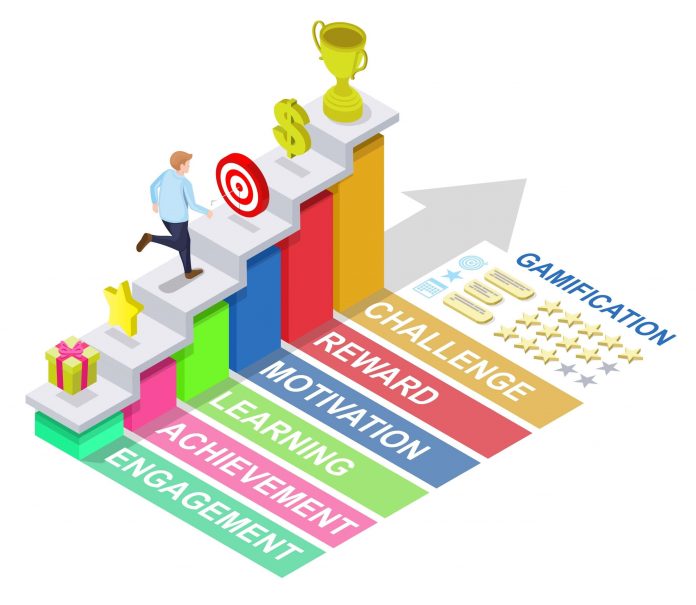
The challenge was simple to identify, but hard to resolve: how to improve the awareness of 150,000 people in an organization with content that is vital to business success but very dry. Many initiatives had tried and failed. If we tried, would we end up in the solution graveyard with everyone else?
Our solution? We piloted a bespoke scalable, gamified digital learning experience that had an “engagement first” guiding principle. The content was so dry, we knew the learners needed to be awake to have a chance to learn. The pilot was successful and we then were funded to create a digital experience that would help people in more than 100 countries to be more confident and capable in their daily work lives.
5 Tips to Keep in Mind
If you are trying to engage employees with a learning experience, consider these five tips:
- Confirm your big, real problem.
New initiatives typically will solve a problem or capture an opportunity. A good way to capture this is through a Problem Statement.
Consider the reaction of others when they learn about your Problem Statement. If individuals fail to recognize the gravity of the problem with an “Oh, gee, that’s a big problem” reaction, then either your Problem Statement needs refinement, or the problem itself may not be as significant as you believe.
A second consideration is the organizational context. Is solving this problem going to have an impact on the organization’s capacity to reach its goals? Will it address a problem for your CEO or leadership team? While the issue may seem significant to you on a personal level, it may not hold the same level of significance for your organization. This will have an impact on the readiness to fund your proposed solution.
- Set a high bar by understanding user motivation.
The impact of learning experiences varies from “ticking the box” to being profound enough to change the path of a person’s life. Try to set the bar as high as possible for the learning experiences you design.
Are you designing a learning experience that users would voluntarily participate in, if they had a choice? Do you understand why different users will participate for different reasons? In the example mentioned, we found that more junior staff members were motivated by fear (“I don’t want to look incompetent if someone asks me about the organization.”), while senior members were motivated by performance (“Knowing this content helps me connect clients with services.”).
Questions about user motivation can be hard to answer at the start of a project, but will help you get to the core of what drives a person to participate—or pass.
- Consider digital and physical experiences.
Digital experiences, particularly delivered through the cloud, provide the opportunity for globally scaled activation and insight gathering that is almost “god-like” from what was possible in times past.
However, having individuals participate in “single-player mode” on a laptop can fail to capture our human spirit, and the enthusiasm, connection, comradery and creativity that group activities can bring out.
By considering physical experiences to complement your scaled digital experience, you can try to capture some of the aforementioned magic. For example, instead of only providing a single-player, online digital learning experience, consider how you can run a tournament to see who the “champion” of a cohort is. Perhaps this can be completed in teams. Perhaps the championship round can be completed in person, with the winners celebrated with a small prize.
Further, heading into a competitive event, consider whether you want to activate collaborative activities. A simple trigger for a group to take a selfie for bonus points, or keep ideas open by inviting a team to demonstrate teamwork in some way, may yield positive results.
Lastly, consider asking leadership to present the winning certificate and share this photo with the department or organization. The impact this type of recognition can have for more junior staff is significant, and should not be underestimated.
- Leverage academic muscle to uncover insights and improve credibility.
I’ve been fortunate to be able to help the Harvard Business School in a small way with its independent research into the nexus between gamified learning and business performance. Findings recently were published in the Harvard Business Review in the “Does Gamified Training Get Results?” article, and a draft of the research paper can be found here.
This relationship has helped me to better understand the conditions under which my learning interventions are more effective, at a level of rigor that I simply do not have the skills to get to. Consider how involving academics, or people with higher-level data and insights skills, can uncover insights and help your program succeed.
Further, the involvement of academics can provide an increased level of credibility to your program, if this is a concern. This may be the case if working with gamified experiences, simulations, or other more experimental learning experiences.
- Think beyond engagement to connect with staff through purpose.
In my world, potential employees are asking more questions about the social purpose of organizations than ever before. Professional purpose—which I simply define as the pursuit of being excellent at one’s job for financial reward and intrinsic reasons—is less of a driver for many individuals.
While designing a learning experience to be engaging, consider tapping into this increased motivator of social purpose to form a longer-term connection with employees. For example, while educating about the organization’s ESG (environmental, social, and governance) program, why not connect this into your corporate citizenship team’s work to provide an opportunity for the individual to be directly involved? This connects the higher-level organizational goals with an individual’s actions. In a recent project I was involved with, more than two-thirds of individuals who participated in a social purpose campaign felt a stronger connection with their organization as a result.
Learning teams have a great opportunity to help form connection through purpose as part of learning experiences.




